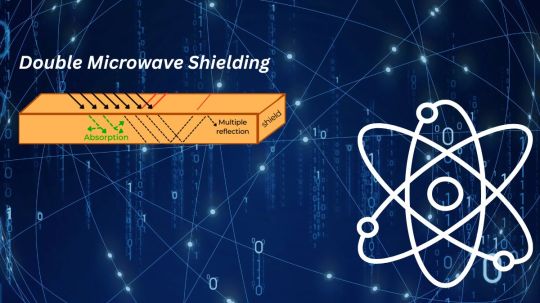#quantummatter
Explore tagged Tumblr posts
Text
Double Microwave Shielding Could Change Quantum Simulation

Researchers have developed "double microwave shielding," which could govern extremely cold polar molecules and lead to groundbreaking quantum information and simulation advances. According to recent investigations, this approach enabled the first Bose-Einstein condensate of polar molecules, a huge physics accomplishment.
Modern physics has strived to use ultracold molecules in quantum technology. Unlike atoms, molecules have strong, long-range dipole-dipole interactions, making them ideal for researching quantum ferrofluids and supersolids and producing tunable quantum matter. However, global collisional loss, an inbuilt instability, has impeded attempts to cool molecules to quantum degeneracy. Early attempts to avoid this developed degenerate Fermi gases by direct assembly, but inelastic losses persisted.
A major answer was collisional shielding, which engineers repulsive long-range interactions to minimise damaging short-range molecular encounters. Resonant static electric fields, repulsive dipolar interactions in quasi-two-dimensional gases, and microwave treatment with a single circularly polarised (+) field were used to achieve this. This “single microwave shielding” method efficiently suppresses two-body losses by establishing a spinning dipole moment that generates a time-averaged repulsive dipolar interaction via field-dressing molecules.
Single microwave shielding reduced two-body losses, but a strong dressing could cause loss by dipolar three-body recombination into a bound state, as with NaCs molecules. Due to an inherent trade-off between preventing two-body loss and mistakenly boosting three-body recombination, the approach was less effective.
Dual microwave control is innovative.
To overcome this basic difficulty, the novel 'double microwave shielding' technology combines two microwave fields with different frequencies and polarisations, usually a linearly polarised () field and a circularly polarised (+) field Dual-field technology allows unprecedented control. These fields cause molecular dipoles to rotate and oscillate, causing repulsive shielding interactions that prevent two-body collisional loss.
Importantly, the two microwave fields control dipolar interaction between molecules outside this repulsive barrier. The researchers found that the moments created by the two perpendicular fields can balance each other. The elimination of bound states that hindered single-field shielding and three-body recombination depend on this compensation. Bose-Einstein condensates, ultracold molecular vapours, are stable when the dipolar interaction is compensated, making the potential repulsive.
New Loss: Floquet Inelastic Collisions
Double microwave shielding works well, but it produces a new loss channel dubbed “Floquet inelastic” or photon number-changing collisions. In contrast to single-field shielding's short-range interactions, these collisions release energy on the order of the microwave beat frequency by exchanging photons between the dressing fields. This process is unique to multi-frequency dressing and the main residual loss mechanism for double microwave shielding. Even with this extra loss channel, losses are still substantially smaller than with single-field microwave shielding.
Complete Molecular Interaction Control
Beyond loss suppression, double microwave shielding offers unsurpassed molecular interaction management. Researchers can now fully change dipolar and scattering length sign and relative magnitude without compromising shielding. While the dipolar length measures long-range dipole-dipole interactions, the scattering length measures contact interactions and can range from massive positive values to zero to negative values.
This level of control is crucial for quantum many-body physics. The ratio of dipolar and contact interactions (ϵdd), a key parameter in dipolar quantum gas properties, can now be precisely controlled. Studies can go from weakly dipolar gases (where ϵdd is near to zero) to strongly dipolar gases (where ϵdd is greater than one) with positive or repulsive dipolar interactions.
The approach is universal for polar molecules like RbCs, NaK, NaRb, and KAg with varying dipole moments and weights. Studies show that shielding improves with dipole moment and mass. More importantly, when microwave parameters are scaled correctly, the “jagged” structure of collision rates and resonance locations shows a pattern across molecules.
Complete control over ultracold polar molecule interactions is a major advance. Double microwave shielding is a powerful method for controlling contact intensity, direction, and anisotropy while reducing two- and three-body loss. This discovery allows the study of many-body physics with strongly interacting dipolar quantum matter, which could lead to novel supersolid states of matter, quantum simulation of extended Hubbard models, and polar molecule-based quantum information platforms.
#doublemicrowaveshielding#quantumsimulation#quantummatter#dipolarquantummatter#News#Technews#Technology#Technologynews#Technologytrends#Govindhtech
0 notes
Text
#CondensedMatter: new quasiparticles confirmed in topological material, paving the pathway toward realizing exotic electronic properties associated with unconventional chiral #fermions - https://t.co/pkvX2slUh1 #QuantumMatter https://t.co/9ltIzqv9cj
#CondensedMatter: new quasiparticles confirmed in topological material, paving the pathway toward realizing exotic electronic properties associated with unconventional chiral #fermions - https://t.co/pkvX2slUh1 #QuantumMatter pic.twitter.com/9ltIzqv9cj
— The Royal Vox Post (@RoyalVoxPost) February 20, 2019
via Twitter https://twitter.com/RoyalVoxPost February 20, 2019 at 08:03PM
0 notes